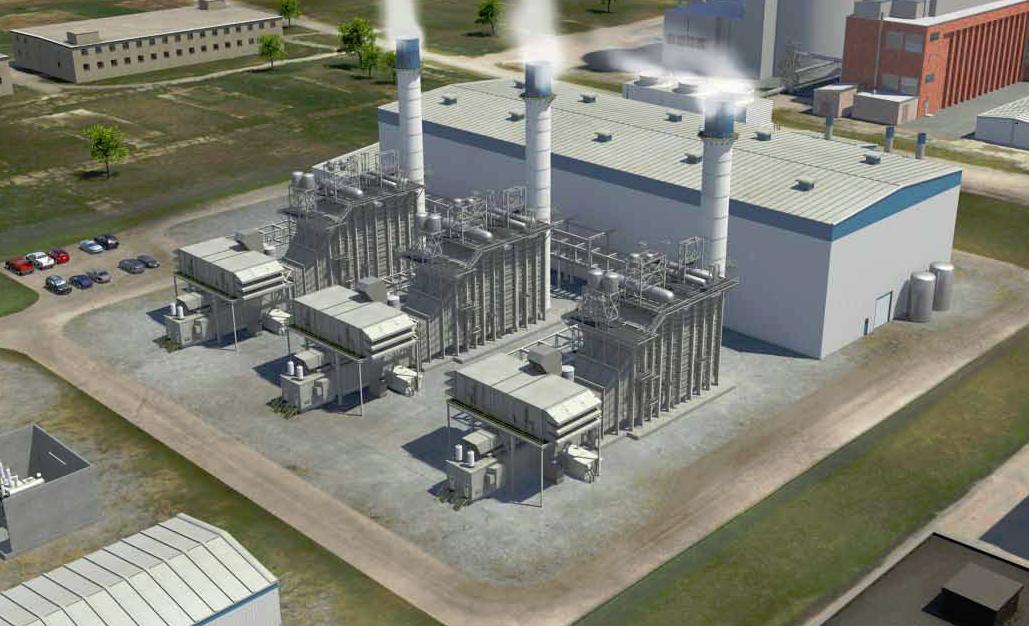
Rob Harris reports on ENMAX Corporation, a Canadian utility company that envisions a future where nothing is wasted and everything is gained.
ENMAX Corporation is a vertically integrated utility company completely owned by the City of Calgary, Alberta. Providing Albertans with electricity for over 100 years, ENMAX has more than 640,000 customers and annual revenue of C$1.7 billion.
The company is in the midst of four major generation projects. The proposed Bonnybrook Energy Centre is a natural-gas-fired combined heat and power (CHP) facility slated to open in early 2013 that will generate 165 megawatts (MW) of power and provide waste heat to neighboring businesses. CHP is an idea that has been around for quite some time. It’sa process by which power facilities generate electricity and capture waste heat that otherwise would be lost to the environment. This waste heat is then used for heating and/or cooling and industrial processes.
The proposed Shepard Energy Centre is an 800-MW natural-gas-fired CHP facility that is expected to provide more than half of Calgary’s electrical needs. This facility will incorporate advanced combustion technology and produce less than half the carbon dioxide per megawatt than a conventional coal-fired plant. This C$1 billion project should begin commercial operation sometime in 2014.
Then there’s the Downtown District Energy Centre, a unique heat-generating facility that will supply heat to nearby office buildings and residential customers. The Downtown District Energy Centre began supplying heat to the municipal hall in March and saved the City of Calgary from having to replace its aging boiler system. The new facility has the capacity to heat 10 million square feet of new and existing residential and commercial buildings. This C$31 million project is central to the City’s plan to rebuild the East Village into one of Calgary’s most sustainable communities.
The final generation project, which is already operating, comprises several wind farms that together generate more than 600,000 megawatt-hours of emission-free electricity per year, enough power to service 75,000 homes. ENMAX sees the future of the utility industry as an evolution toward a more localized distributed energy grid.
The company is extremely conscious of its relationship with the environment and is constantly looking for ways to improve and minimize its impact. Dave Rehn, executive vice president, generation and wholesale energy, states, “When you switch power generation from coal to natural gas, the estimated reduction in CO2 gases traditionally is in the range of 50 percent.” Since the issue of greenhouse gases is becoming more urgent, ENMAX feels that it is also important to address the reduction of CO2 through the use of sustainable energy from solar, wind and traditional energy sources.
The Distributed Energy Generation model that ENMAX uses is not a new system, according to Rehn. “The European Community has been using this energy distribution system for quite some time. Belgium has been very successful with this model, especially in combination with its use of solar panels. We believe that this model will work very well on the North American continent.” Part of this new model involves what the company calls micro-generation. In a few select homes, ENMAX is currently testing a device called a WhisperGen. This is a micro co-generation plant for the home that recycles the waste heat to create hot water and electricity. Rehn explains, “The WhisperGen uses a Stirling engine to create its electricity. So far in our tests we’ve been very pleased with the results, and almost every unit has created a surplus.” The unit is the size and shape of an average domestic dishwasher and can supplement or replace a central heating boiler system. The units traditionally generate 33 to 100 percent of an average home’s electrical needs, with the potential to sell any surplus back to the electrical grid.
With the world’s concern about peak oil and the dwindling of our natural resources, all this conversion to natural gas brings up the question, how long will our supplies of natural gas last? Rehn states that, according to the natural gas companies, “There will be a significant supply at a reasonable cost for the next 50 to 100 years. Let’s assume, though, that it’s 20 years and things begin to run out. The other technology that has been around for over 100 years is gasification. That is, you can take any carbon source and run it through a gasifier to produce what is called a syn-gas. Then you have a fuel that you can transport just like you do natural gas. In fact, syn-gas can replace natural gas in any of our natural-gas-fired power plants.” Although the technology for gasification has been around since World War II, long-term pricing on natural gas makes this technology more expensive than current price points.
ENMAX is a utility company that envisions a future with fewer power lines. Its philosophy of an energy infrastructure that brings electrical generation even into the home, while perhaps not new, is unique for the continent of North America. By combining this with its sustainable energy projects and its new CHP facilities, ENMAX looks like a company that is well prepared for whatever the future may bring. www.enmax.com













